

How do tea leaves make their way from the plantation to the tea cup? The adventure begins in the plantation, when leaves from bushes at least five years old are harvested. The stages described below are the most important ones in tea production.

It’s a simple matter, really - the higher the altitude the tea trees grow at, the higher the quality of the tea. The reason is that they grow more slowly, and the whole time they do so they harness nutrients from the soil. The finest plantations are found in mountainous environments, often shrouded in mist or under clouds. This kind of climate is the most suitable for growing tea.
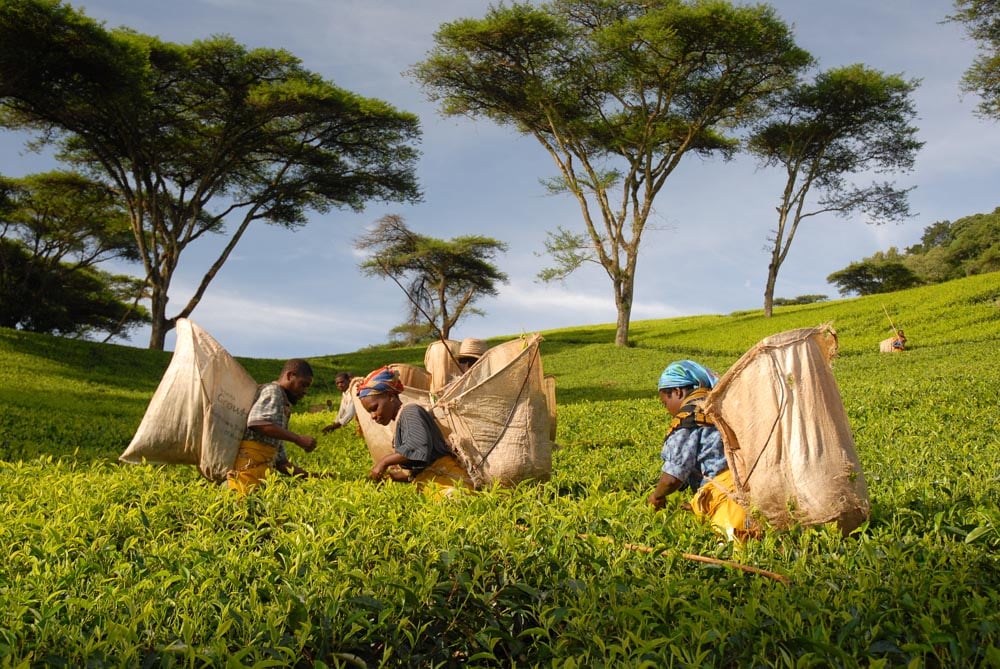
The leaves are plucked by hand at harvest time. For producing the highest quality tea, only the two uppermost leaves and a bud (fresh shoot) find their way into the tea-pickers’ baskets, the best of whom pick up to 20 kg of leaves every day. Their harvest is transported to a tea processing plant, where the leaves are left to wilt.
1. Wilting/Withering
Fresh tea leaves contain as much as 75% water, and it’s the wilting (drying) stage in which some of it is removed. The traditional way of doing it is to dry them in the sun, but a more modern solution is to use rooms at a controlled temperature (30-32°C). Wilting gets rid of some of the inherent moisture, lending the leaves a degree of flexibility. This makes the next step of “disruption” or “leaf maceration” much easier, although some green tea is treated differently instead.
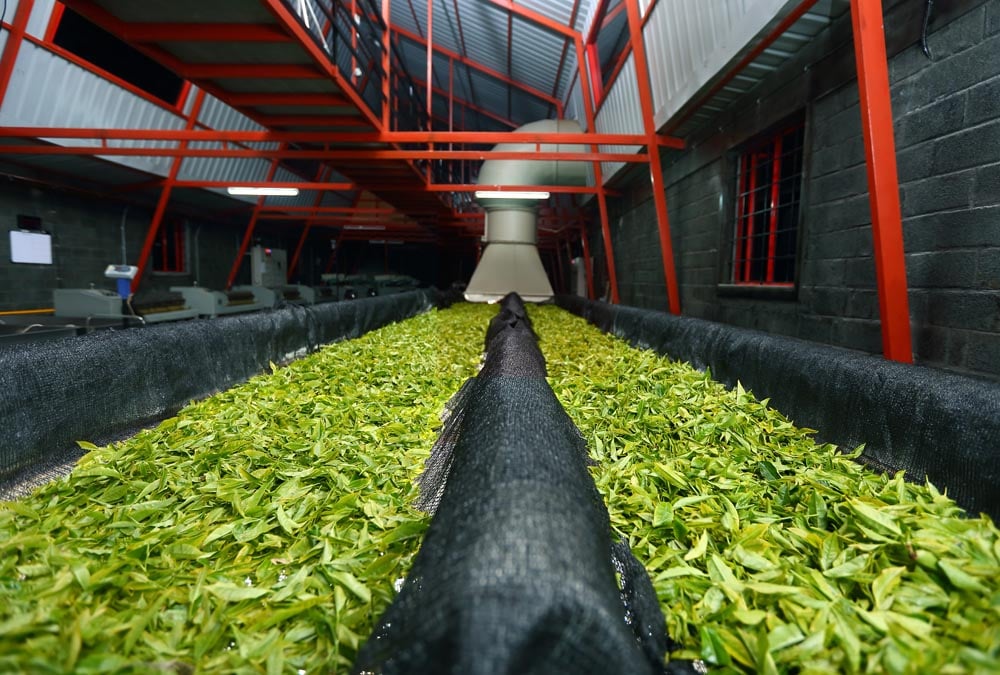
This is when the leaves are turned over and over or rolled in order to twist and shape them or bruise or tear them, whichever it is this promotes oxidation (sometimes referred to as “fermentation”). The exact treatment they receive depends on their intended purpose. Black tea or oolong is not shaped as such, instead the purpose is to rupture the cell walls of the leaf to release the juice inside. The enzymes and catechins in the cell juice come into contact with the oxygen in the air, triggering oxidation.
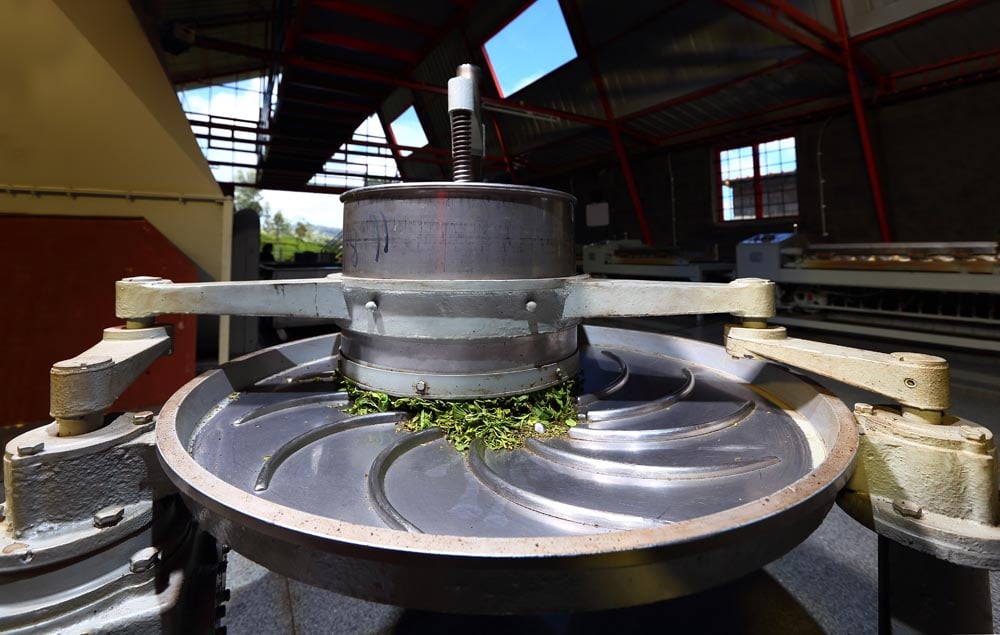
3. Oxidation
The point at which the leaves change colour, oxidation also affects their taste and gives rise to the aroma they have. The leaves are spread out evenly on tables in a humid environment. The extent of oxidation varies according to the desired result, and it’s the tea master’s job to decide when to finish it. Taking black tea and oolong as examples, the former undergoes complete oxidation (100%), whereas the latter either typically experiences 10-15% for light oolong or 60-70% for dark oolong. Oxidation can take 1-3 hours, depending on the quality of the leaves, the season, the region and the desired colour of the tea.
Green and white teas don’t undergo oxidation at all, in fact. Pu-erh is exceptional in that it’s actually fermented by introducing microorganisms onto the leaves, and the best ones are left to ripen for years.
4. Drying
The point of the drying stage is to ensure the leaves end up with only 4-5% moisture content so the resultant tea has a good shelf life; by the way, completely dry tea won’t infuse (brew) properly. Industrial dryers are often used for this purpose, though traditional methods also exist. For instance, black Lapsang Souchong or green Lung Ching “Dragon Well” might be dried in an environment with charcoal, lending them their specific smokey or roasted taste and aroma.
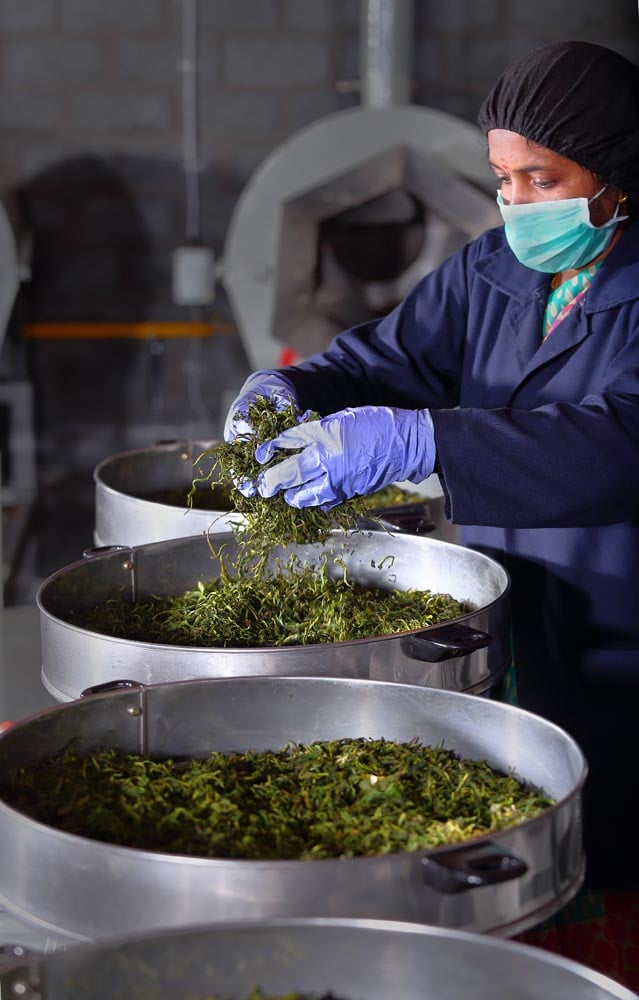
5. Sorting
In this, the last stage, the teas are sorted according to leaf size, while any undesirable components, such as stems, are removed. Whole leaves with a tiny amount of broken leaf is the hallmark of tea of the highest quality.
Now for what happens at OXALIS…
Our selection process
We at OXALIS receive hundreds of samples of tea for our tasting team to try out. This involves a lot of sampling and discussion, numerous phone calls to suppliers and laboratory testing before a batch of tea has a chance of being selected. Our demands are high and uncompromising, and only those that meet our rigorous standards are considered.
From the perspective of the calendar year, we get started in February when samples of the new harvest of Nilgiri Frost arrive from India; tasting and testing of it continues until the latter part of the summer. It’s necessary to note that some tea is produced all year round, in countries like Sri Lanka, for example, whereas others are purely seasonal in their offerings, such as Darjeeling.
Quality control
We taste tea throughout the year, no matter when it’s harvested for the purpose of quality control. Sensory aspects such as taste and aroma are evaluated, alongside scientific investigation. Notably, this testing process is done on tea already included in our range, not just potential additions to it. The presence of pesticides is gauged, and a tea sample which fails to meet European standards is disregarded from consideration. We do inform the supplier if this is the case and provide them with feedback and laboratory findings, which promotes viable trade between them as the producer and us as a buyer. Growers are then able to address issues relating to their agricultural and production practices and make necessary improvements to meet EU requirements and our high demands.
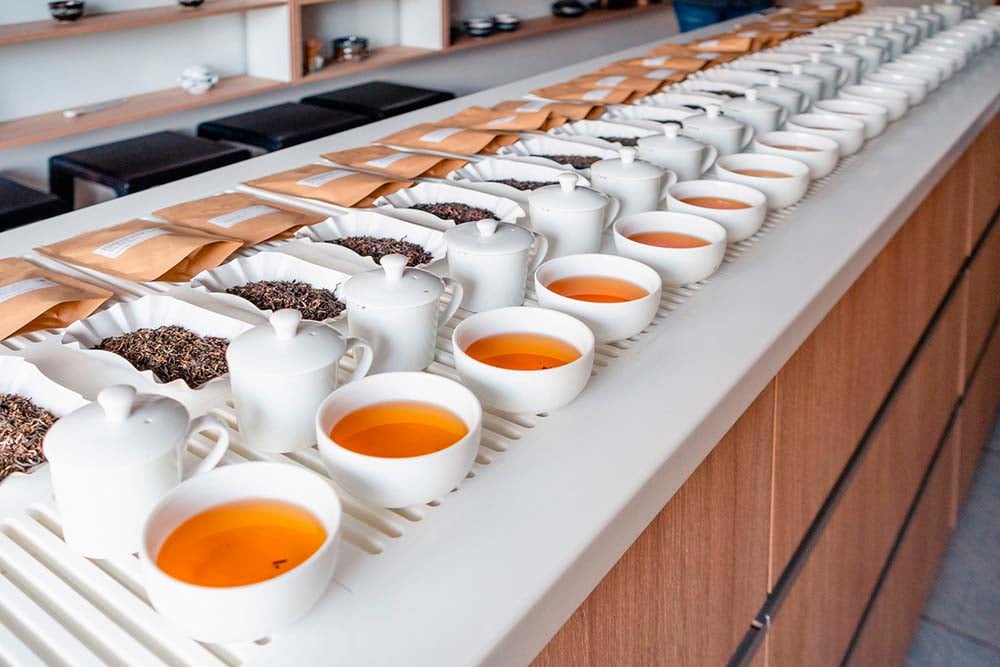
Once a batch of tea is earmarked for purchase and has passed all quality checks, a series of other processes can begin.
Transport
We buy tea in the form of direct trade, meaning it comes directly to us from the grower without the involvement of an intermediary. This allows us to oversee quality in all aspects. With a few exceptions, the majority of tea makes its way to us by sea, with only a few “first flush” (fresh harvest) types travelling by air when the product needs to be as fresh as can be.
All the way to the cup
As soon as the tea reaches us, it undergoes sensory analysis to confirm it corresponds to the sample tested beforehand. After an initial inspection, the tea is placed in a warehouse given over to pure, unflavoured tea, prior to being packed in OXALIS packaging and sent to our dispatch warehouse in nearby Tečovice. From there, its journey continues to a shop, or to wholesalers, customers of the e-shop or foreign partners.
OXALIS website and shops
All of the tea we stock is detailed on the website, searchable by country of origin, type and other filters.
We store pure loose leaf tea opaque tin caddies at our shops, which is optimal for maintaining quality. Don’t hesitate to seek assistance from our sales staff, who are trained and knowledgeable on the tea we sell. Directions are given on every pack for how best to prepare the tea at home.
Blog and social media
We regularly post on Facebook, Twitter and LinkedIn in English, while Czech speakers can also take advantage of a blog on the Czech website and a podcast in the language.
